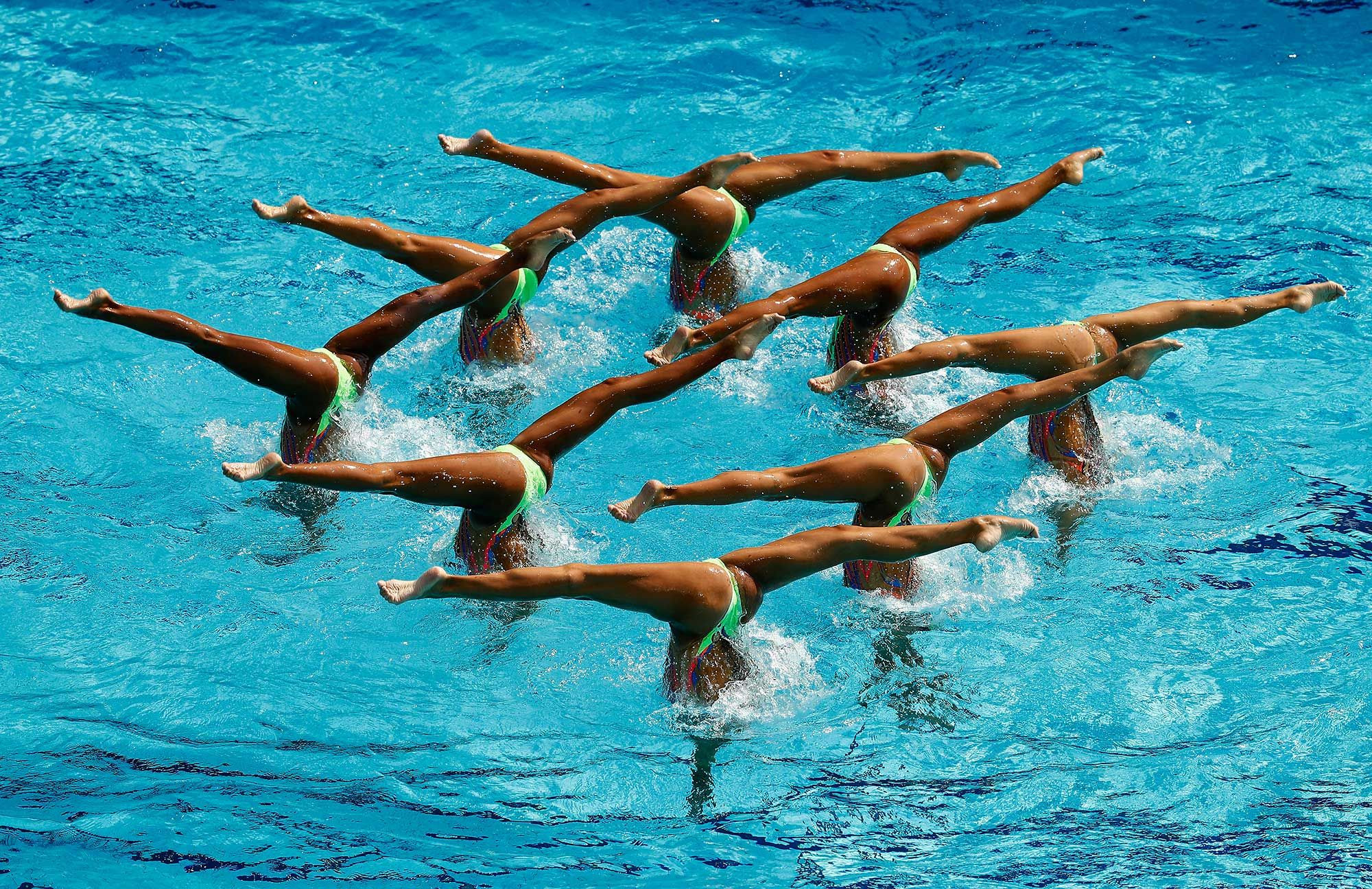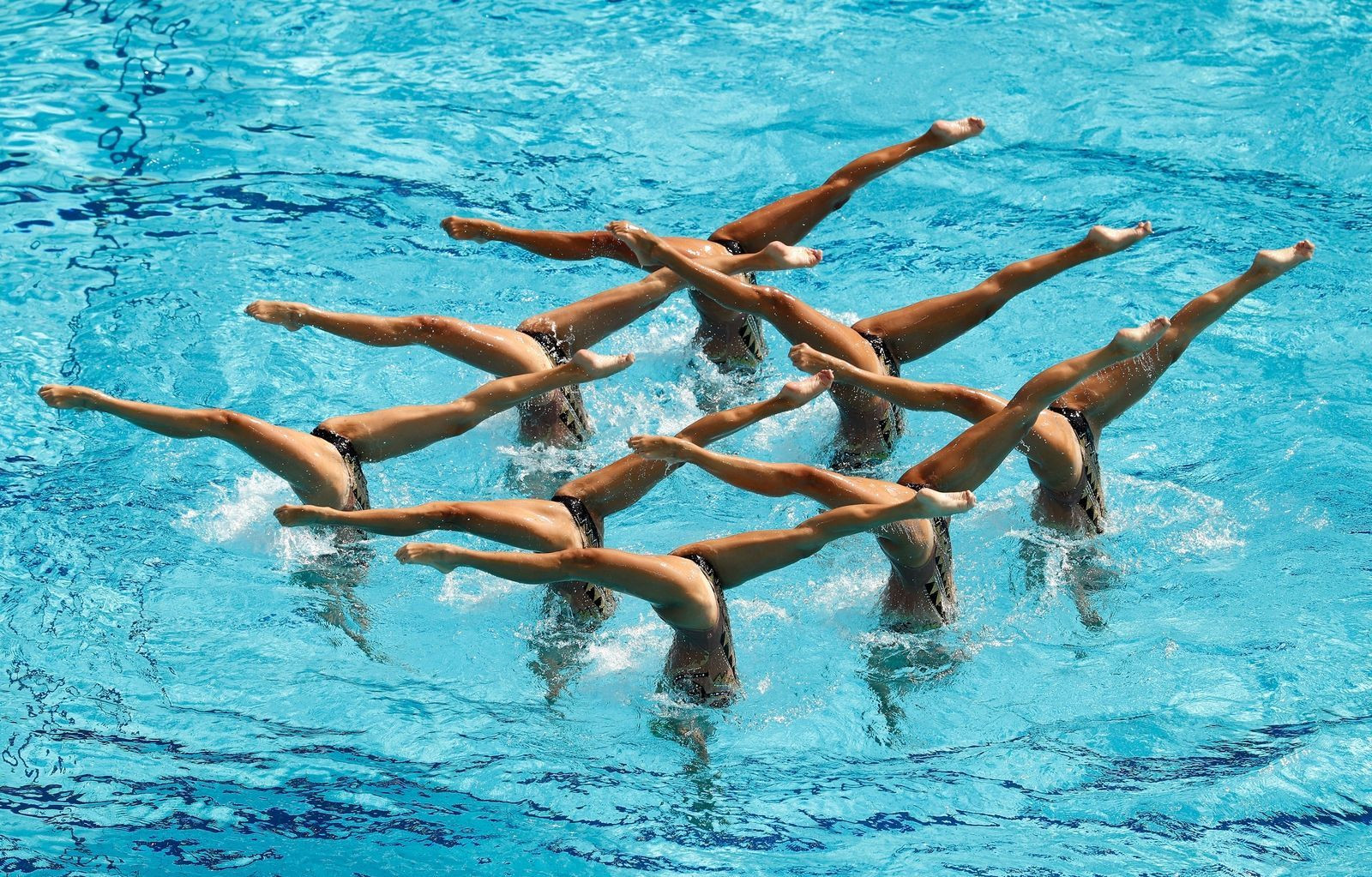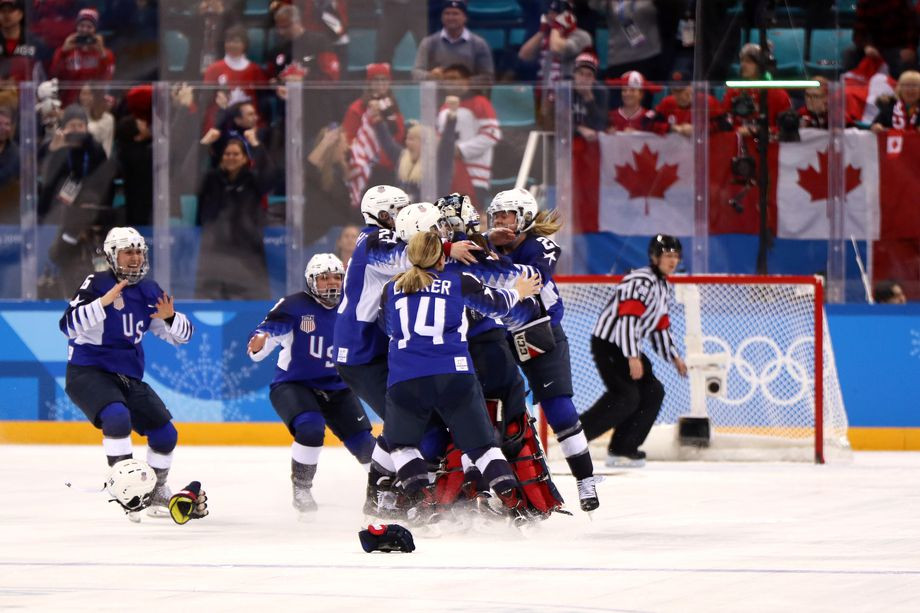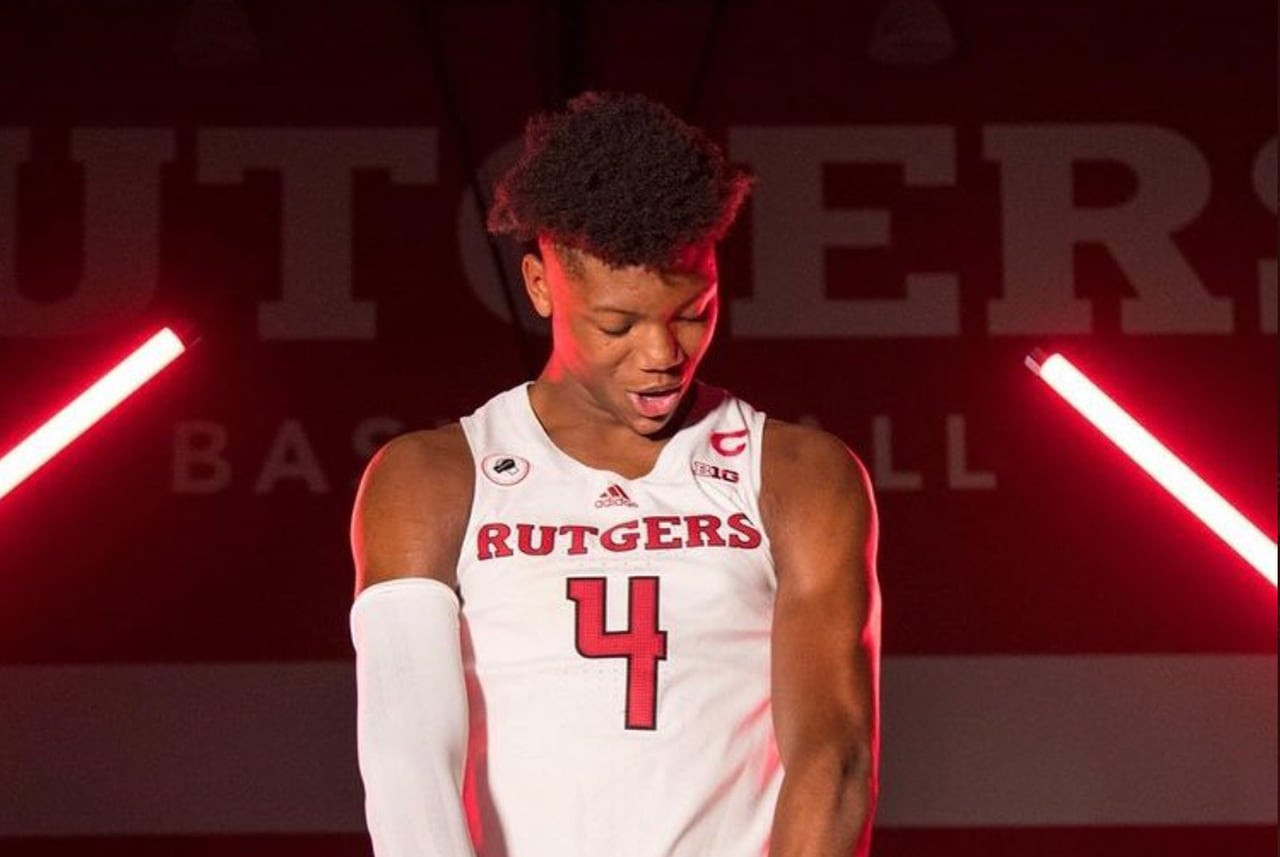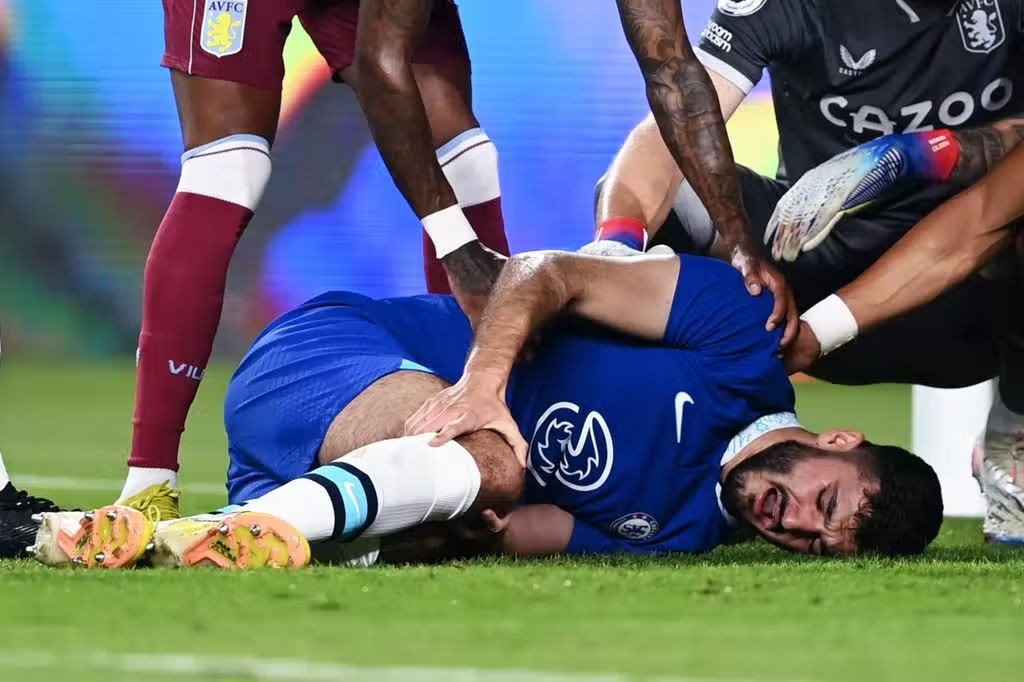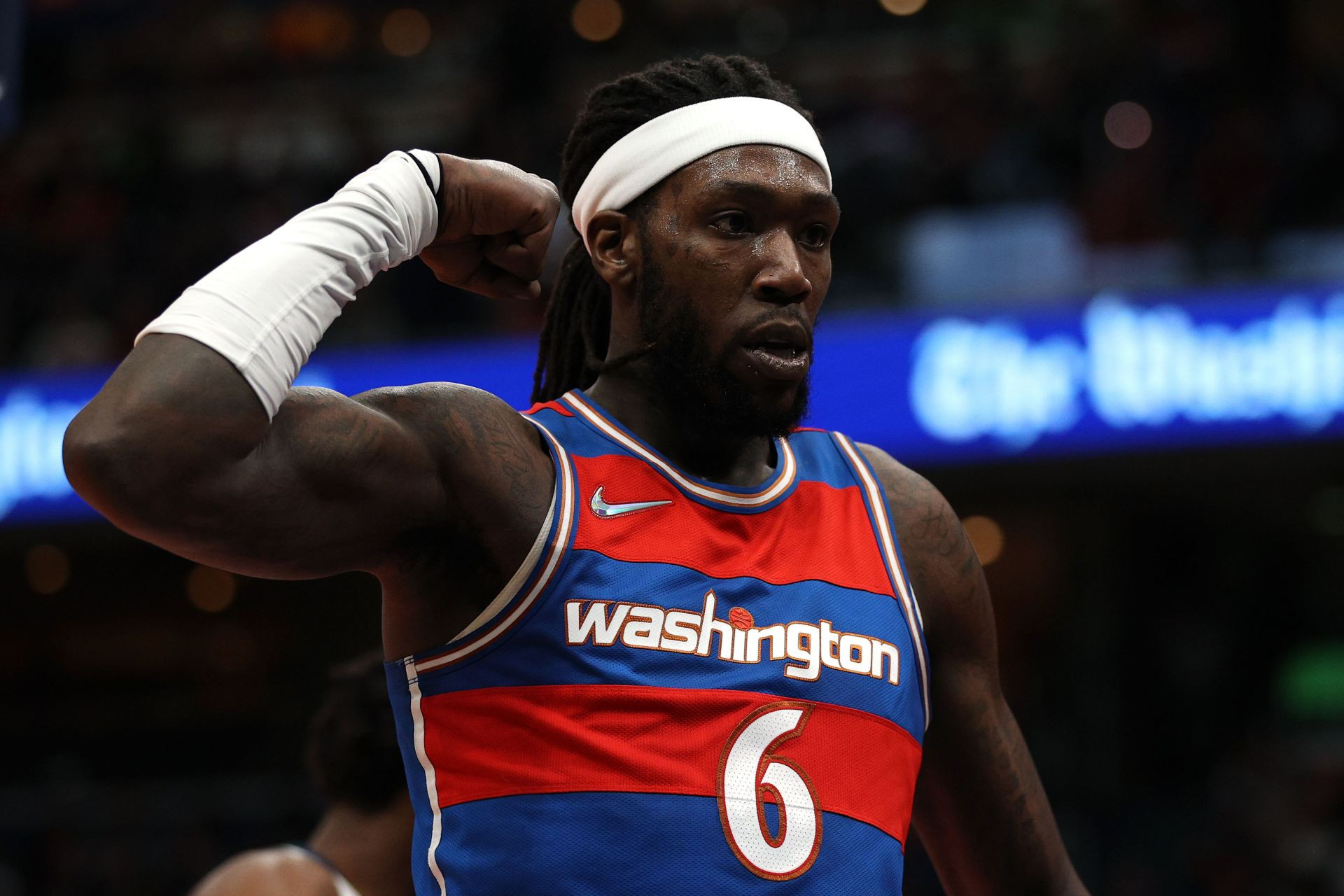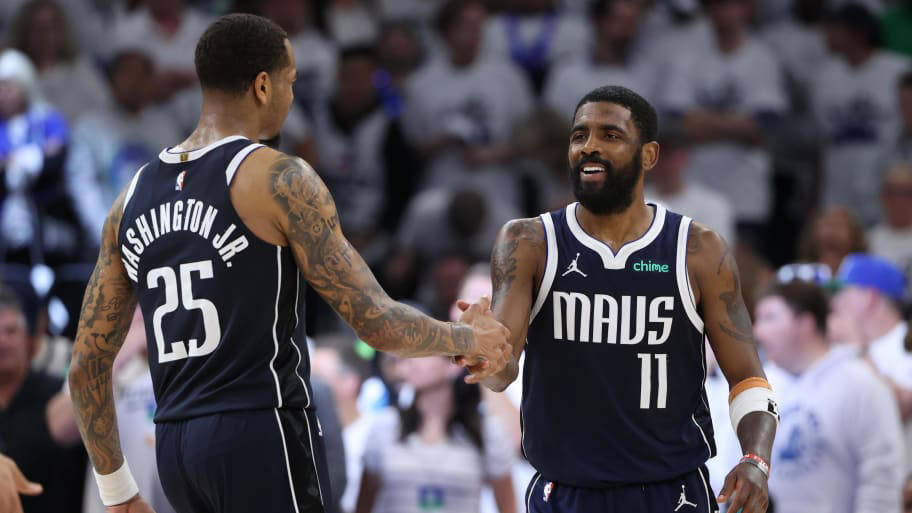Imagine diving into a swimming pool, and then, in the liminal moment before the water closes over you and you slip into the embrace of weightlessness, somehow stopping yourself: holding your body rigid, with your legs sticking out of the water, like a pillar of rock. Not in, not out; half wet, half dry; held in impossible suspense between two states.
In the 1990s, a boy from New York state named Bill May trained himself to perform this trick, emulating a female synchronized swimmer named Patti Rischard. When May was 15, he pulled it off at the national junior championships for synchronized swimming. Naturally, he won. Over the following decades, May established himself as the all-time greatest male exponent of his sport. He’s 45 now, and has six World Championship medals, the latest earned six months ago in Doha.
The Fight for Acceptance
But before he won any of them, May had to battle to prove that men belonged in synchronized swimming. “We fought everything,” he told me. “We fought parents and coaches and everyone saying men shouldn’t be in the sport. We were booed, we were kept out of competitions, we were petitioned against.” He presented to the world a broad smile, and the expressive, lyrical arms of a ballet dancer. All the while, beneath the surface, he was kicking like crazy.
At one point, May retired from the sport for ten years, believing his talents would never have a global stage. When Fina (the international governing body, which was renamed World Aquatics in January last year) voted to admit male synchronized swimmers at the World Championships in 2014, he came back, and found himself competing against a generation of men and boys whom he had inspired. One of them, Belgium’s Renaud Barral, told me that when he started “there was no established path. There was one role model: Bill May. There was no social media, you couldn’t follow athletes, there were about three photos of Bill May on Google and that was pretty much it”.
A Dream Deferred
In October 2022, citing a “commitment to gender equality” and a “vision to maximise the global appeal” of the sport, Fina voted overwhelmingly to allow male synchronized swimmers to compete at the Olympics. It seemed their long struggle for acceptance would have a fairytale ending. In February CNN reported that May was “set for a beautiful [Olympic] debut” in Paris, adding: “Few athletes will be more deserving of their place there.” NBC’s website still lists him as one of the “top 100 athletes to watch” at the Games. But May will not compete at these Olympics, and nor will any of the men of his sport.
Officially, synchronized swimming in Paris is a mixed event. In reality, the obstacles for male swimmers were insurmountable. This is the story of how May and his fellow pioneers, just at the moment they thought were about to dive into a lifelong dream, were left in limbo: not included, not excluded; held in impossible suspense between two states.
The Demands of Synchro
With its façade of nose clips, waterproof make-up, glittery costumes and clipboard-wielding judges, synchronized swimming — artistic swimming in official parlance, synchro for short — hints at genteelness and a certain stage-school finesse. What is not appreciated widely enough is that it is a sport of colossal physical demands, which winnows the most supreme athletes. They must be able to propel themselves out of the water without touching the bottom of the pool, tumble and twist like a gymnast, have the stamina and breath control of a distance runner, and move and emote and interact like dancers.
Frithjof Seidel, a German who won a European bronze medal as a springboard diver before falling in love with synchro and switching sports, told me that the conditioning work is incomparably harder than it is for his former sport. May has said that he believes synchro is one of the most difficult sports in the world.
Facing Prejudice and Resistance
If they grew up practising the sport, most male synchronized swimmers will tell you that they faced prejudice and resistance. “When I went to competitions, I wasn’t welcomed with open arms,” Barral recalls. “There were often insults of a very homophobic and degrading nature. It could be from certain judges, or coaches. It was my good fortune that in my teenage years I was just so happy to be doing the sport that no one could break my joy.”
When men were admitted to the World Championships, it was a powerful, barrier-breaking moment. The French synchronized swimmer Quentin Rakotomalala, who, like May, was first drawn to the sport when his sister started doing it, told me: “That was when I realised that I could have my place in this sport, which seemed predestined only to women.”
But there was still something left unquenched: the dream that burns in the heart of every athlete, and which for most is kindled in childhood. “When I saw [the synchronized swimming at] the Olympics in 1992, it just blew my mind,” May told me. “Their perfection, the hard work that these athletes put in, and just the dedication that [it] takes. I said, ‘Wow, that’s something that one day I hope to do.’ ” When he went to the 2004 Olympics as a coach, his dream had never felt closer; nor further away. It would be another 18 years before that door was opened.
A Missed Opportunity for Gender Equality
The decision to admit men to the Olympics seemed to fill one of the last remaining gender gaps in the programme. Rhythmic gymnastics, which remains women only, and Greco-Roman wrestling, which remains men only, are the only other single-sex Olympic sports. The additions of women in boxing, in 2012, and ski jumping, at the 2014 Winter Games, were momentous “good news stories”, creating renewed interest in those sports, and giving pioneering athletes an overdue global spotlight.
But the idea of men in an Olympic synchro pool was not universally accepted. Some of this opposition, no doubt, was shallow; some was deep. Synchronized swimming is a sport where teams and pairs are judged in part on how well they mirror each other’s movements. Swimmers wear identical costumes, because they are supposed to look, to a judge’s eye, as similar as possible. The goal is uniformity. To some degree, then, the fundamental process of the sport, through which this goal is sought, is the annihilation of difference.
Men, inherently, challenge this orthodoxy. The best coaches he’s had, May says, have recognised that “men [aren’t] the same as females, [in] the way that they move, their centre of gravity”. When he won a silver medal as the lone man on the USA’s eight-person acrobatic team at last year’s World Championships, he says the coach Anna Voloshyna “understood that a man cannot be hidden. Our bodies look different, we’re not wearing the same costumes. Instead, she made the routine showcase the diversity and the beauty of men and women swimming together”.
But not everyone in synchro is so open-minded. “It takes time to blend male and female athletes together,” May says, “and I think there’s a lot of fear involved.”
The Unexpected Hurdle
That May was swimming the team routine at all stemmed from another crucial decision. At the World Championships, since their admission, men had competed almost exclusively in the two-person mixed duets; only last year were they allowed in the team events too. But when the Olympic approval came through in 2022, there was a caveat: the duet would remain female-only, men would be permitted only in the team event.
In other words, men could compete, but not in the event that they had all been swimming in for years; they were given about 18 months to master a new discipline and force their way into an established squad. “I always had very mixed feelings about it,” Barral told me. “You had to hope there was a man who was just as strong as the girls in order that he could swim in the team ballet. That narrows the chances. I think really there were two men who had a chance: Bill May and Giorgio Minisini.”
The Future of Men’s Synchro
May and Minisini are the two icons of men’s synchro. If May is the sport’s elder statesman, then Minisini is its young rock star: handsome, talented, charismatic, the author of a soul-baring autobiography called Il Maschio: The Male. The son of a synchronized swimmer and a judge, he was inspired to take up the sport when he saw May compete at the Rome Open in 2000, at the age of four. He won two bronze medals behind May at the 2015 World Championships; one with Manila Flamini, the other with Mariangela Perrupato. Two years later he and Flamini beat May and Kanako Spendlove to gold in the technical mixed duet.
It was widely expected that May and Minisini, at least, would find their way on to their nations’ Olympic teams. Last year Minisini won two silvers and a bronze in team events at the European Games, while May was one of three men to win a medal in the acrobatic team routine at the World Championships, along with China’s Shi Haoyu and Japan’s Yotaro Sato.
Ultimately, none of them have made it. May was included in a 12-person Olympic squad, but believes he didn’t get a fair shot at qualifying for the final eight-person team: he contends that he wasn’t allowed to participate in the routines that the team will perform in Paris before the final cut was made. He has been left bitterly disappointed by, as he sees it, the short-sightedness of coaches.
“The opportunity was given by World Aquatics, and by the IOC, but it was placed into the hands of the coaches,” he says. “I never thought in a million years that … they [wouldn’t] take it. That’s one of the things that I will regret for ever: that the opportunity came for men to be in the sport and to inspire future generations, and we’ve taken a step backwards.”
In a statement, USA Artistic Swimming said: “Bill is an incredible team member and ambassador. We know what it would mean for him and for the sport to have a male participate. Our coaches had the incredibly difficult job of selecting eight athletes from a group of the 12 best that our country has. Those coaches evaluated each athlete daily for nearly a year and selected athletes that they believed gave us the best chance to win.”
Barral told me there was a mood of “disillusionment and disappointment” among the male synchronized swimmers, and even World Aquatics was moved to issue an unusually punchy statement registering its dismay. “This should have been a landmark moment for the sport,” the federation said. “We understand that it was always going to be a challenge for men to earn a spot on a team in time for Paris 2024, but we were still hopeful that some would succeed.”
A Devastating Blow
No one was more crushed than Minisini. The 28-year-old Italian was widely considered the face of his sport’s future, a rare swimmer with the potential to transcend synchro’s relatively niche audience. But last week he announced his retirement.
“I’ve always swum with enthusiasm, albeit in a rigid, exclusive environment full of prejudice,” he said, “but I always thought the sport could change. I always found it absurd that a discipline would want to continue to keep half of humankind out.
“I felt like a castaway in a stormy sea, who knew that sooner or later, he would find a happy island. But I didn’t think it would take so long, and I didn’t expect my boat to break down once I spotted the island. I found myself back where I started: in the same waves as 22 years ago, with a dream pushed back another four years, if not more.”
A Missed Opportunity for Inspiration
The men I spoke to were disappointed not only for themselves, their own sporting ambitions, but also for what the Olympics would have represented: an unimpeachable moment of belonging, a chance to inspire, and an opportunity to show a different ideal of male athleticism.
“The sporting world is very binary,” Barral said. “Lots of people see this ultra-masculinity and this ultra-femininity and don’t see a place for themselves.” He cited the very small number of gay male athletes in Paris (only 20 out of about 5,400 male competitors, according to the website Outsports). “It’s clear that the representation of difference, for young people who feel different … there barely is any.”
There is also a fear among some that the absence of male synchronized swimmers from these Olympics will be used as a pretext to entrench the discipline as a women’s sport. World Aquatics, however, say it remains “absolutely determined that there will be male artistic swimmers in the team competition at [the] 2028 [Olympics]”, and are working to add the mixed duet to the programme in time for those Games.
A Legacy of Resilience
That will probably come too late for May, who will be 49 when the next Olympics take place in Los Angeles. Instead, he now plans to devote himself to coaching the Santa Clara Aquamaids, the club of which he has been a member for 29 years.
“This has taught me that nothing is granted, everything is a fight and a struggle,” he told me. “But that’s going to make me a better coach to nurture male athletes and nurture female athletes, and to fight for a dream that maybe isn’t a reality yet.”
He will be in Paris, as an athlete representative and ambassador, and, no doubt, the loudest cheerleader of the USA synchronized swimming team. “Those athletes are my heroes,” he says. “They are the greatest athletes I’ve ever seen in my life.” But for him, the dream of competing at an Olympics will for ever remain, like the floor of the synchro pool, something shimmering and untouchable.
• Olympics 2024 daily schedule and start times for the Paris Games




